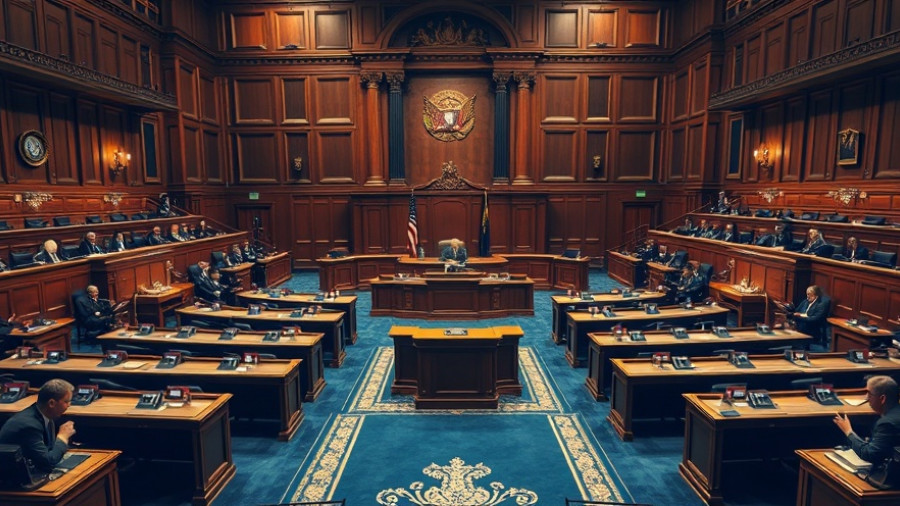
Senate's Dilemma: A Frustrating 20 Days of Shutdown
As we reach Day 21 of the current government shutdown, the atmosphere in the U.S. Senate has become increasingly strained. Today, the Senate gears up for yet another vote—its 11th attempt—to advance a measure aimed at funding the government and terminating the ongoing stalemate that has led to significant disruptions across various federal services.
The Cost of Political Impasse
The struggle to gain requisite support has left Republicans and Democrats at an impasse. Each of the previous attempts has failed to secure the minimum of 60 votes necessary to proceed. This deadlock not only stalls legislative efforts but also places financial strain on more than 750,000 federal workers who have been furloughed. Essential workers, such as military personnel and law enforcement, continue to serve without guaranteed pay, showcasing the human cost of political discord.
Growing Concerns Among Voters
Senate Majority Leader John Thune's stance reflects a broader Republican strategy that points fingers at Democrats, accusing them of “holding government funding hostage.” On the other hand, Senate Minority Leader Chuck Schumer has criticized Republicans for their lack of willingness to negotiate, referring to the situation as “another week of Donald Trump’s government shutdown.” These partisan tensions reveal a stark divide between the parties, and among ordinary Americans, concern grows regarding health care, as open enrollment for insurance looms.
Historical Context of Government Shutdowns
This shutdown marks the third longest in U.S. history, falling behind only the extended shutdown under former President Trump from December 2018 to January 2019, which lasted 34 days. The current climate highlights a troubling trend of political maneuvering at the expense of citizens’ livelihoods. With increasing frequency, shutdowns have become a strategic tool for partisan leverage, leaving countless workers in uncertain conditions.
What Lies Ahead? Potential Outcomes of the Vote
Looking forward, the stakes of today’s vote are higher than just reopening government operations—they also encompass critical discussions about the funding of federal workers. Thune has announced plans to introduce legislation that would ensure that those who continue to work during the shutdown receive their due compensation. Yet, without cross-party collaboration, the chances of passing this measure remain slim.
Emotional Impact on Federal Workers
For those affected directly by the shutdown, uncertainty breeds anxiety. Federal employees are left grappling with the stress of unpaid bills and the challenge of budgeting amidst the crisis. Personal stories emerge—mothers and fathers worried about affording childcare, individuals struggling to make ends meet—humanizing the data and statistics. The emotional toll cannot be understated, as trust in the government sways with every failed vote.
Path Forward: What the Public Can Do
This ongoing crisis calls not only for political resolution but also for public engagement. Citizens are encouraged to reach out to their representatives, expressing their concerns about the impact of the shutdown on their everyday lives and demanding action. Engagement in civic discourse is crucial; it shifts the narrative and puts pressure on lawmakers to prioritize the will of the people over partisan politics.
Conclusion and Call to Action
The continued government shutdown poses serious questions about the future of U.S. governance and the well-being of its citizens. As we await the results of today’s critical Senate vote, it’s vital for Americans to voice their concerns and push for a resolution. Whether through social media, direct contact with representatives, or community meetings, your voice matters. Ensure that your concerns are heard and that the government is held accountable.
 Add Element
Add Element  Add Row
Add Row 



Write A Comment